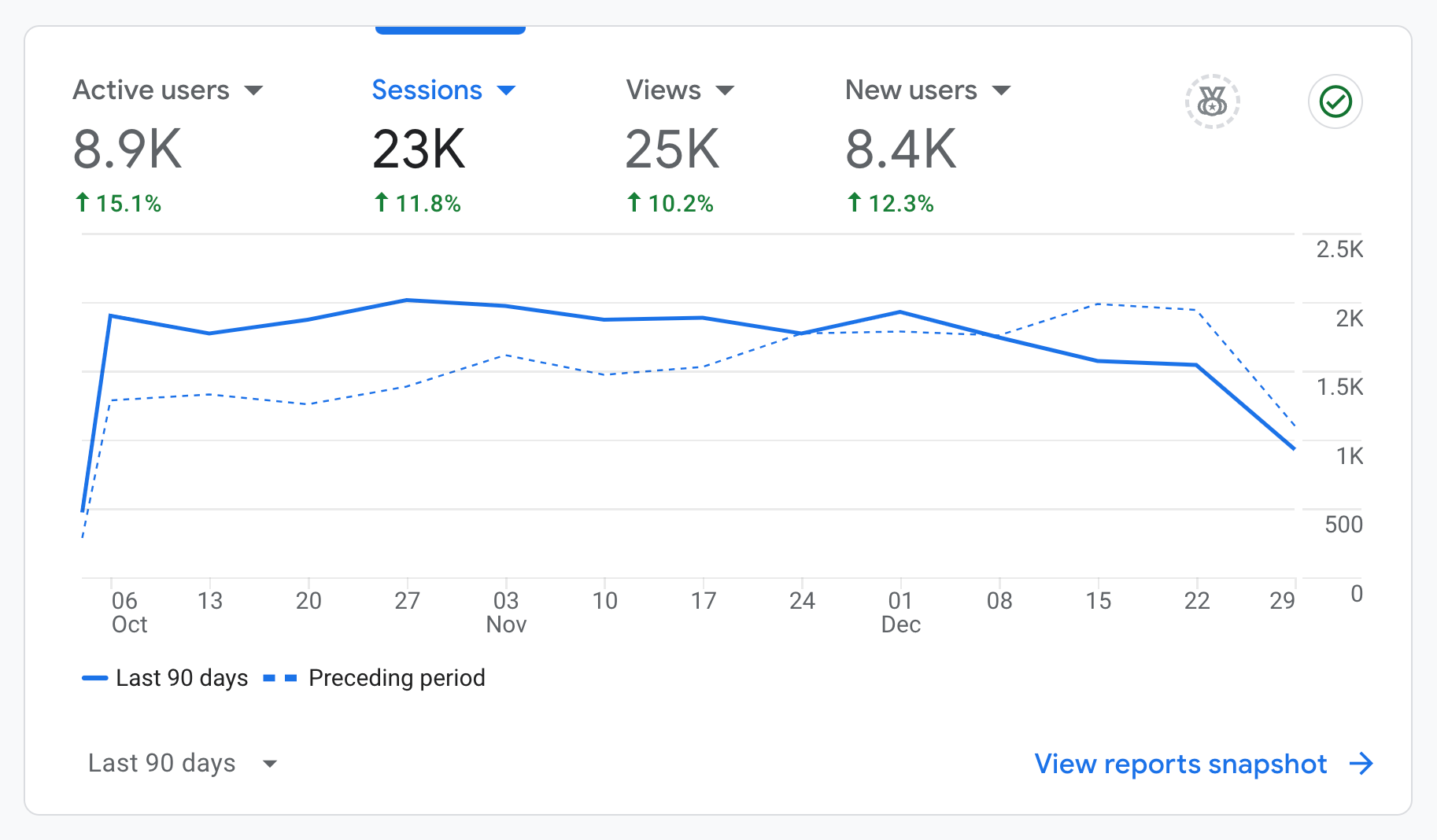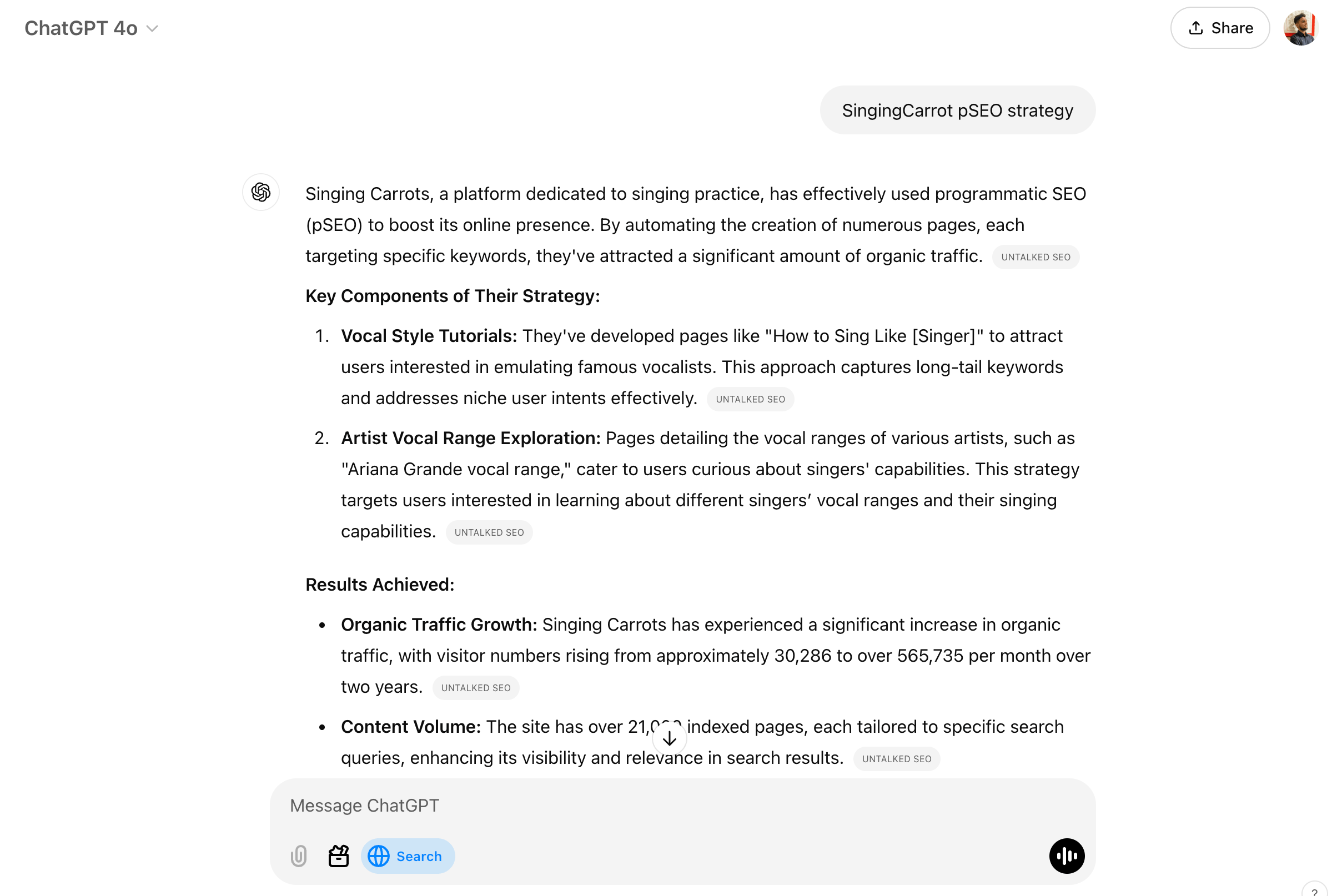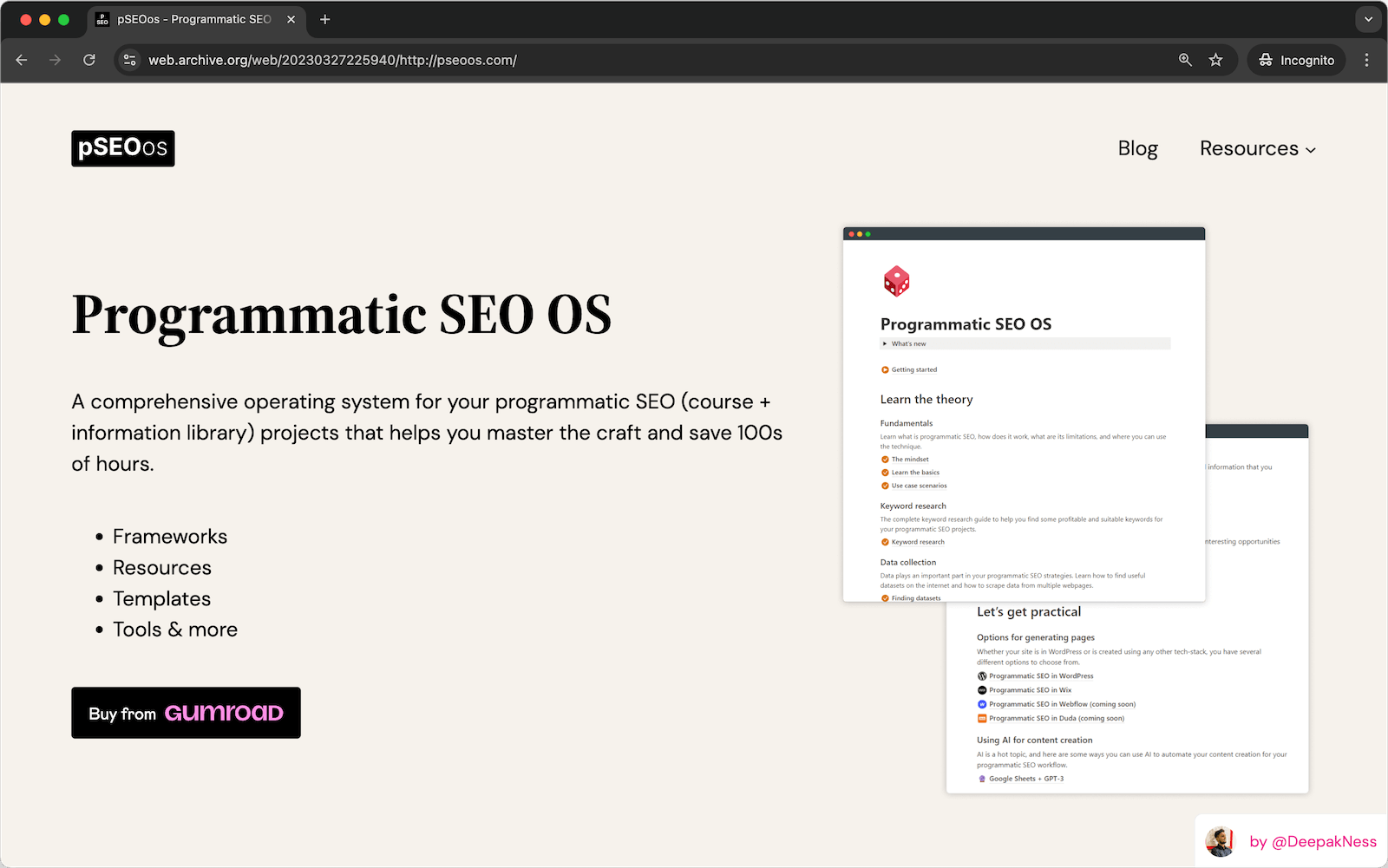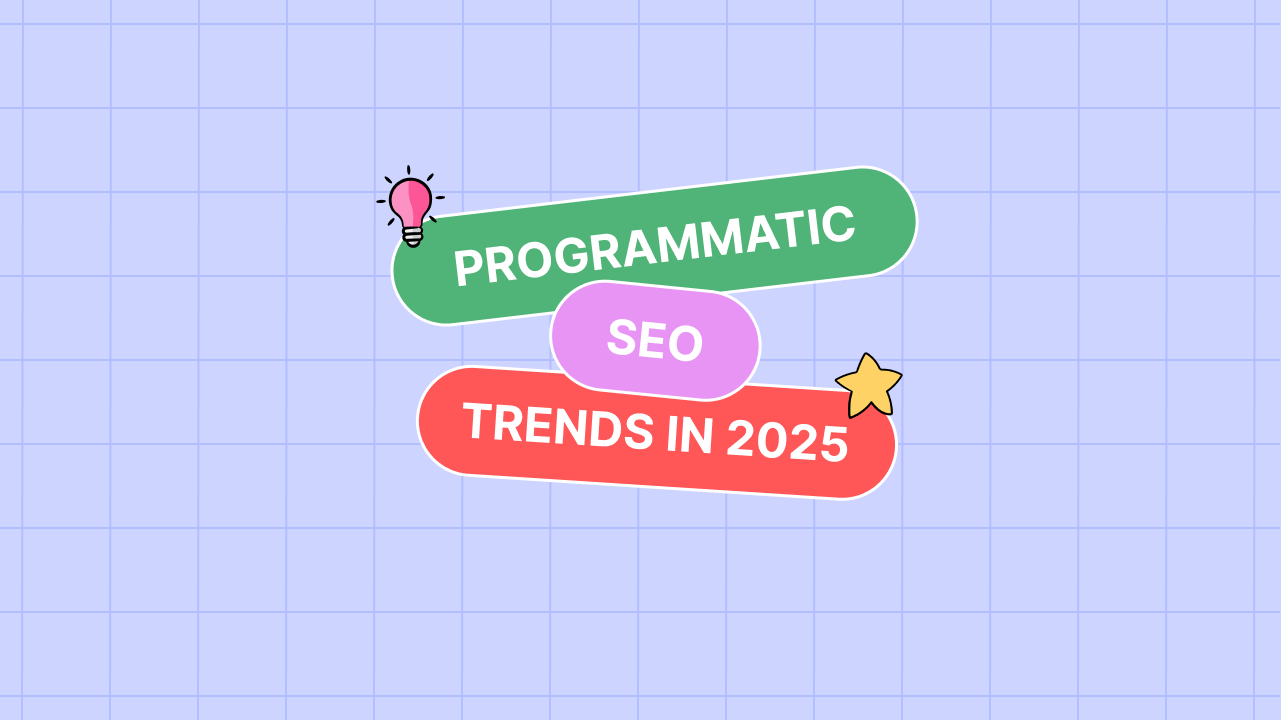The SEO landscape is constantly changing. Over the past few years, we’ve seen significant updates to search engine algorithms and noticeable fluctuations in rankings. If you’re wondering how these changes impact programmatic SEO in 2025, you’re in the right place.
In this post, we’ll explore the most important trends in pSEO, what’s working, what’s not, and how to stay ahead.
Does programmatic SEO still work in 2025?
YES, a big yes!
Programmatic SEO continues to work, even on fresh domains. I am constantly working on new pSEO projects, and they continue to perform as expected. For example, take a look at the progress this project is making. I started working on it around the middle of last year, and it was a brand-new domain.

That said, programmatic SEO in 2025 isn’t the same as it was a few years ago. Search engines have evolved, and so must your strategies. I also posted about this on X, which should provide some further clarity on the topic.
Now, here’s a glimpse of what’s changed and what’s working now.
Key Programmatic SEO Trends for 2025
I am compiling a list of some trends, best practices, do’s and don’t’s of programmatic SEO that you must know moving forward this year. In fact, most of these points will make sense for regular SEO as well.
Search engines, especially Google, now prioritize websites that users trust.
Building trust with search engines and users has become more important than ever. You must focus solely on the user. If users are having bad experiences with programmatic content, Google records these signals and will not rank you high enough.
Actionable steps:
- Create user-friendly content by including real data, expert quotes, examples, etc., to show your content is reliable.
- Don’t rely on programmatic SEO alone. Also, create blog posts, case studies, white papers, infographics, videos, etc., for your website.
2. Publish slowly
Previously, I have recommended publishing thousands of programmatic pages at once, but this is no longer advisable. Publishing multiple pages simultaneously can now lead to indexing issues and potential penalties.
I understand that the entire point of pSEO is to publish in bulk, but you should start by publishing smaller batches. Otherwise, other search engines may take longer to index your website and can also hurt it.
Actionable steps:
- Start by publishing a smaller batch of pages, maybe 50 or 100, and check how they perform.
- Use tools like Google Search Console to track which pages are indexed and fix any issues.
- Gradually publish more pages over weeks or months to avoid overwhelming search engines.
3. Diversify your content formats
Programmatic SEO works well, but it shouldn’t be your only content strategy. Add videos, interactive tools, and infographics to complement your pages, as these formats improve user engagement and can also boost rankings.
Actionable steps:
- Add videos to your programmatic pages. For example, include a “how it works” video on service pages.
- Create tools like calculators or comparison charts to make your pages more engaging.
- Use infographics to summarize data and make it easy for users to understand.
4. Design pages for readability
In 2025, plain, text-heavy blog-post-style pages will not be enough. Your programmatic pages need a modern, user-friendly design. And to make your website future-proof, I suggest investing in visually appealing landing page templates.
As you can see in the video, I created a beautiful design using the default block editor in WordPress for pSEO. You can also use Elementor or any other page builder.
Actionable steps:
- Use short paragraphs, bullet points, and clear headings to make your pages easy to read.
- Avoid large blocks of text. Break up information with images or tables.
- Use landing page templates with clean, modern designs.
5. Use AI for personalization
AI can help you create personalized user experiences based on their behavior, location, or preferences. This approach can improve user engagement and boost rankings.
Actionable steps:
- Dynamically adjust content based on a user’s location or preferences. For example, a travel website could show weather updates for specific cities.
- Use AI to generate unique, relevant descriptions or FAQs for your programmatic pages.
- Add recommendation engines to suggest related content or products.
6. Focus on technical SEO
Technical SEO is the foundation of any successful programmatic SEO strategy, and no matter how good your content is, your pages will not rank without it. You must ensure your website is fast, easy to navigate, and optimized for search engines.
Actionable steps:
- Speed up page loading times (use tools like PageSpeed Insights to test your site).
- Add schema markup to improve how your pages appear in search results.
- Fix any crawlability issues and keep sitemaps up to date.
7. Adapt to AI-driven search
Search engines like Google are using AI more and more to rank and show results. To do well in AI-generated summaries and quick searches, you should optimize your pages. Create content that directly answers people’s questions and use structured data to improve your chances of being seen in AI results.
In addition, many people directly use ChatGPT and other AI chatbots to search, and well-designed programmatic pages can also improve your site’s visibility in chatbots.

For example, when I asked a question, ChatGPT listed UntalkedSEO as one of the sources, as you can see in the above screenshot.
Actionable steps:
- Create pages that directly answer common questions your audience asks.
- Include FAQ sections and use structured data to optimize for “People Also Ask” boxes and featured snippets.
- Ensure your content is concise and well-organized so AI tools can easily extract information.
Conclusion
Programmatic SEO continues to thrive in 2025, but success requires adapting to changing trends and focusing on user experience.
Key takeaways:
- Treat pSEO as part of a bigger content strategy, not the entire strategy.
- Use automation to scale intelligently, but ensure every page delivers value.
- Regularly update programmatic pages to keep them fresh and relevant.
- Monitor performance metrics like page rankings, organic traffic, and click-through rates to refine your approach.
- Prepare for AI-driven search by optimizing for AI aggregators and zero-click search environments.
Focusing on trust, design, personalization, and technical SEO can help you scale effectively while staying aligned with modern search engine expectations.








Leave a Reply